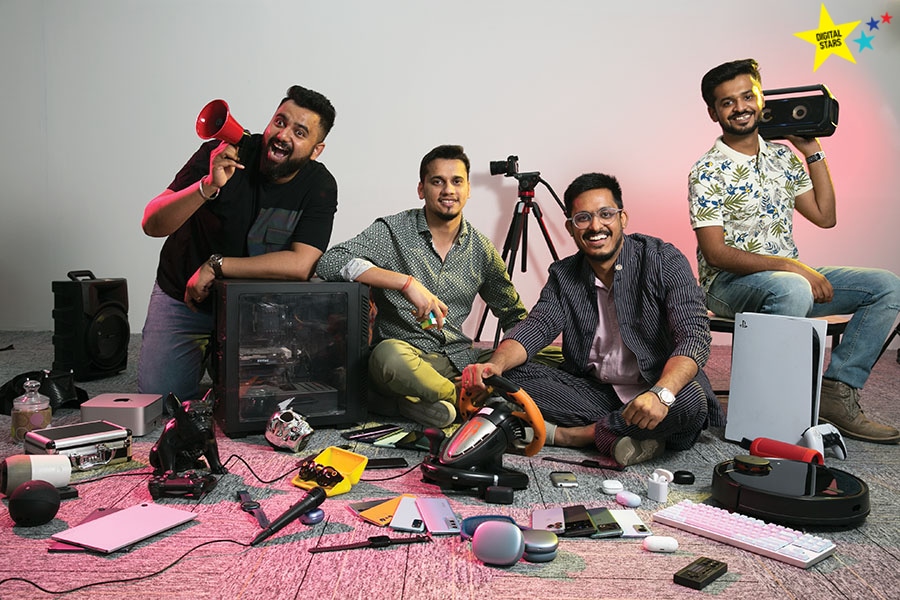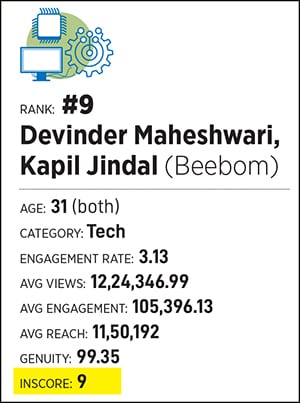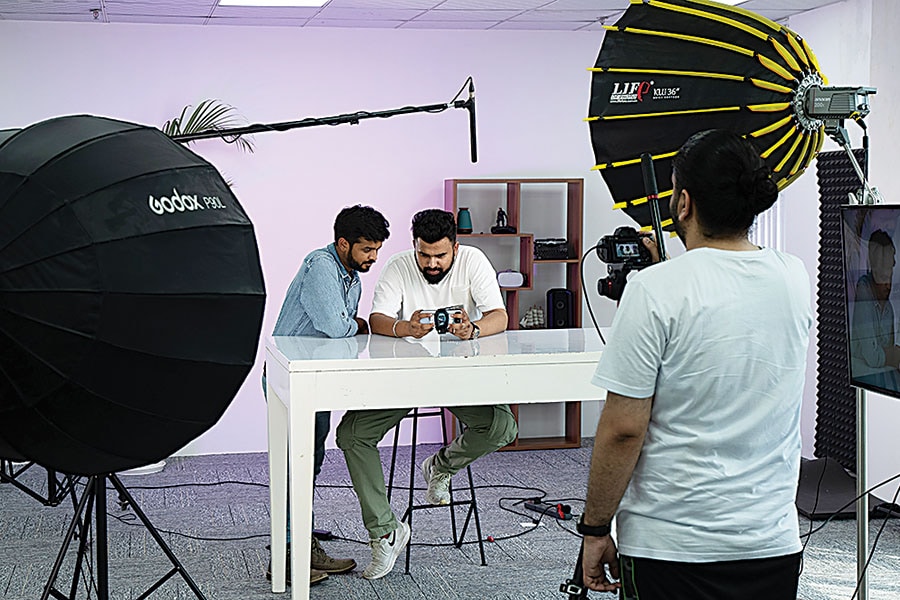
Beebom: From IIT prep buddies to tech gurus
Devinder Maheshwari and Kapil Jindal started Beebom as a website about tech developments. They have now turned their attention to videos and creating a following on Instagram
 (From left) Rupesh Sinha, the face of the videos on Beebom, co-founders Kapil Jindal and Devinder Maheshwari, and video producer Akshay Gangwar
Image: Madhu Kapparath
(From left) Rupesh Sinha, the face of the videos on Beebom, co-founders Kapil Jindal and Devinder Maheshwari, and video producer Akshay Gangwar
Image: Madhu Kapparath
It all started at a test prep institute in Rajasthan. Test prep institutes, especially those that help prepare for IIT entrances, are often known for their rigorous schedules, giving students very limited opportunities to cultivate friendships for a lifetime. But for Devinder Maheshwari and Kapil Jindal, the coaching institute in Hanumangarh, Rajasthan, is where they met for the first time as teenagers.
While the duo did not make it to the IITs, both managed admission at the prestigious Nirma University in Ahmedabad. Maheshwari joined the electrical engineering stream and Jindal the computer science one. “We were flatmates, and often, when I would come back from college, I would spend time with Kapil who’d be on his laptop,” says Maheshwari. “We had just got internet and we would search the internet to find interesting tech stuff.”
Soon, they realised there was massive potential on writing about the world of technology and Jindal would nudge Maheshwari about doing something on their own. “Back then, we had no intentions of building a venture or had any idea that we’ll do this for so many years together. We were interested in finding interesting new tech-related stuff, and making sure that our peers, our college mates, know about it.”
The duo soon launched a website, a blog of sorts, thetecnica, which would feature content about the latest tech developments, new products and hacks, among others. “When we launched the website, we did the coding for 68 days… we were not taught by anyone,” says Maheshwari. “Our peers were happy and thought we had done something interesting.”
By 2013, when the friends finished college, they knew thetecnica was what they wanted to do. Maheshwari went on to take up a job after graduation, but soon realised he didn’t quite enjoy that. “Kapil did not take up a job after graduation,” recalls Maheshwari. “In 2013, we started building thetecnica as a full-time venture and at that time, we were in Ahmedabad because our college was in the city, and we were comfortable.”




 Soon, the duo knew that if they wanted to scale up, they needed to shift base to New Delhi since the prospective job seekers were there. “That’s how we came to Delhi,” says Maheshwari. “We had limited funds.” They renamed the company
Soon, the duo knew that if they wanted to scale up, they needed to shift base to New Delhi since the prospective job seekers were there. “That’s how we came to Delhi,” says Maheshwari. “We had limited funds.” They renamed the company 





